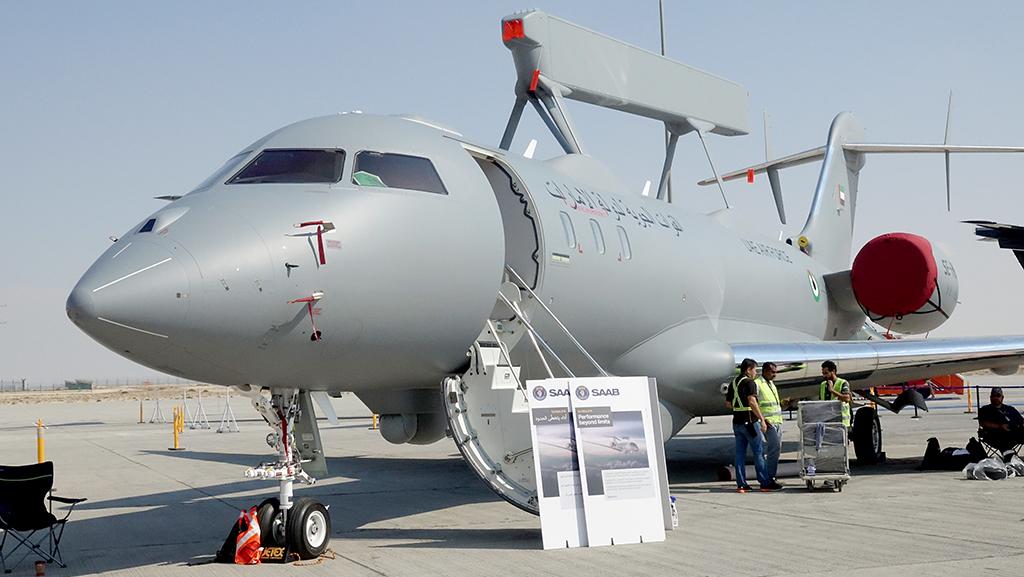
Only two years have passed since the U.S. Air Force canceled the $3.2 billion Joint Stars recapitalization programs, under which 17 business jets would have been acquired with a new generation of synthetic aperture radars.
But interest in the special mission derivatives of VIP aircraft remains high despite the Air Force’s stated concerns about the vulnerability of such platforms as new air defense threats emerge beyond 2025.
The Air Force continues to pursue the wide-ranging Advanced Battle Management System (ABMS) as part of a broader vision to distribute sensing and command-and-control capabilities across a mix of fully networked, manned and unmanned aircraft.
But the U.S. Army is not convinced the time has come to move away from business jet derivatives.
The Army’s top modernization priority is the Long-Range Precision Fires (LRPF) program. The Advanced Tactical Missile System (ATACMS) allows the Army to strike targets up to 300 km away. The LRPF program seeks to field the Precision Strike Missile (PRSM) with a range greater than 500 km and the Strategic Long-Range Cannon for targets at up to 1,850 km. The Army’s Rapid Capabilities and Critical Technologies Office, meanwhile, is developing the Long Range Hypersonic Weapon (LRHW) with a range of thousands of kilometers.
But those weapons are useless if the Army lacks the ability to identify and locate targets hundreds of kilometers away. Although funded by the Air Force, the cancellation of the J-Stars recapitalization program left a big gap in the Army’s sensor architecture just as the LRPF and LRHW efforts call for such a capability.
Rather than waiting for the ABMS to arrive as a fully mature capability, the Army launched its own version of J-Stars. The service is now developing the High-Accuracy Detection Exploitation System (HADES), a multi-intelligence payload that could operate at altitudes of at least 41,000 ft. At the same time, the Army’s Intelligence, Electronic Warfare and Systems (IEW&S) program office has started surveying the market to buy a single-digit number of business-class jets to carry the HADES payload. For the Multi-Domain Sensor System (MDSS) fleet, the Army prefers to limit the contenders to aircraft already in the military inventory. They include the Boeing 737-derived P-8A, Bombardier Global 6000-based E-11 and Gulfstream G550-derived C-37.
In July, the IEW&S office announced deployment of a testbed aircraft based on a Leidos-owned Bombardier Challenger 650. The Airborne Reconnaissance Target Exploitation Multi-Role Intelligence System is providing intelligence data on missions in the Pacific and Europe, but its primary role is to provide the Army’s requirements developers experience with the capabilities of a high-altitude jet.
The MDSS program could become the single-largest opportunity in the next decade for a business jet derivative in the special mission arena, but opportunities for smaller contracts involving fewer aircraft continue to emerge around the world.
On July 7, the German parliament approved a $1.1 billion budget to support the Persistent German Airborne Surveillance System (Pegasus) program. The Luftwaffe already operates the Global 6000 as a VIP transport, so three more of the same aircraft will be acquired to carry the Integrated Signal Intelligence System under the Pegasus program.
As Pegasus takes shape in Germany, the European fleet of business jets dedicated to the intelligence, surveillance and reconnaissance (ISR) mission continues to grow. An undisclosed European government signed a $350 million contract for special mission aircraft, Israel Aerospace Industries announced in June. Its Elta Systems subsidiary, which specializes in radar and electronic warfare systems, is managing the program.
The United Arab Emirates (UAE), meanwhile, has started operating a fleet of newly delivered business jet derivatives ordered several years ago. In September, the UAE’s Saab GlobalEye, a Global 6000 equipped with airborne-early-warning and surface-surveillance radars as well as a battle management suite, participated in an air defense exercise with the U.S. Air Force for the first time. The UAE also received the first of two Global 6000s modified by Marshall Aerospace in the UK under Project Dolphin to perform the ISR mission.
Manufacturers are also seeking to broaden the market for special mission aircraft, particularly during the COVID-19 pandemic. Bombardier, for example, has emphasized the utility of its Learjet, Challenger and Global-series jets as medical evacuation aircraft. Last spring, for example, a newly delivered Jetflight Challenger 650 was pressed into immediate service, completing 100 flight hours in two weeks to repatriate travelers of several countries who had been stranded abroad due to travel restrictions.

